Dear Santa Claus: I think I've been good this year. Even though I'm Jewish and don't believe in you or anything, maybe you could see fit to give me a present this year? I'd like a country, please. Preferably a new one I've not been to before. Ideally, it would have good food, stunning scenery, a totally unique language and culture, and welcoming people. Thanks, Santa. I'll leave some milk and cookies out for you.
In case you haven't guessed by now, we've left Thailand and have entered Laos! That's country number 63 for me, in case anyone's counting. Which I didn't think you were.
Laos is a totally unique country in Southeast Asia. For one thing, it's landlocked. For another, it's one of five remaining officially communist countries in the world (and no, Russia doesn't count). Of those, this is the fourth that I've visited, after Vietnam, China, and Cuba. The fifth, North Korea, is one I'm unlikely to get to anytime soon.
With one tenth the population of Thailand, and less than one thirtieth of its GDP, Laos feels like another world entirely. Bordered by the busy, bustling countries of Thailand, Vietnam, and Cambodia, as well as behemoth China, entering Laos feels like going back in time. There are no 7-Elevens at every corner. No billboards. No neon. The only shops and restaurants we've seen so far have been extremely local.
Goodbye Thailand, hello Laos
We woke up this morning in Chiang Khong very early, in time to watch the stunning sunrise from the breakfast area as we sipped our coffee. We paid up, packed up, and said a heartfelt goodbye and thank you to Mai, the lovely owner. I was so sad to leave the resort, and hope I'll make it back there one day.
It was Christmas morning, and we exchanged Christmas wishes with Ryan's family and some of our friends back in Montreal. I hear the road conditions are rather poor and that many people still don't have power, so I hope you're all celebrating safely and warmly at home. Meanwhile, we were off to a new country and a new set of adventures today.
At around 8am, a minivan picked us up and drove us a few kilometers to the Thai immigration exit point at the Friendship Bridge. Fun fact: This is actually Friendship Bridge Number 4; there are three others along the Thai-Laotian border. It's the main way to cross into Laos from Northern Thailand, and one of the only land borders where foreigners can get a visa on arrival. So it's very popular among tourists like us.
We went through the relatively straightforward exit formalities on the Thai side quickly; they mostly just involved getting stamped out. Then, we were in no-man's-land for a while, out of Thailand but not yet in Laos. We boarded a coach to cross the Friendship Bridge, and watched the flags on the side of the bridge switch midway across the river from Thai to Laotian.
Then it was time to get stamped into Laos. This was much lengthier and more complicated than leaving Thailand. First, we had to fill out our entry forms and line up at a first window, where we handed in our passports, a single passport-sized photo, and the forms. They collected these as well as an extra $1 US surcharge because it's a weekend. A bit cheeky of them, but whatever.
Then, we stood around and waited for a good half hour or so while the passports were returned to us in batches, in seemingly random order. There didn't appear to be any logic to who got their passport back when; they just would occasionally bring a stack of them to the window and hold them up and you had to look out for yours. I got mine back a good ten minutes ahead of Ryan, even though we'd both handed them in at the same time. Whatever.
The passport at this point contained an entry stamp, a full page visa on arrival, and a QR code with which the visa fee had to be paid at a third window. They wanted payment in USD -- it was $40 per person at the time of writing this post -- and they were extremely picky about the quality of the bills. They wanted clean brand-new banknotes only, no marks, crumples, creases, or tears. We handed over a new $100 bill that they turned down because it had the tiniest little tear in the side. Luckily, we had another one handy that they deemed acceptable.
After all that was done, we were finally allowed to use our payment receipt to scan to gain entry to Laos. Whew. We made it!
The luxury slow boat down the Mekong
At this point, we were in the port town of Huay Xai, just across the river from Chiang Khong. This is where the pier is for the public slow boats that most backpackers and locals take for the two-day journey to Luang Prabang. However, back when we'd booked this trip, the public boats hadn't yet resumed running after COVID, and we were unsure when they might start up again.
So instead, we decided to book a private boat cruise with one of the two main operators who run this route, Nagi of Mekong. It cost a little more, but it was well worth it: We got an upgraded private boat with tables, chairs, couches, a relatively clean toilet, and plenty of space to spread out and stretch. We got included meals, unlimited free water, coffee, and tea, as well as snacks and drinks available to buy on board. We got free transportation to and from the piers, guided help crossing the border, and accommodation pre-arranged in Pak Beng for the first night. This is definitely the way to travel!
We boarded the boat with about two dozen other travellers from all over the world, and settled in for two days of cruising gently downstream.
Cruising down the Mekong
It could've been boring to spend seven hours on the river today, but it was actually lovely. The scenery on both sides of the river was stunning: Mountains, banana trees, rock formations, the occasional local village. The local kids are all off school this week for holidays (it's Hmong New Year, which is a big deal around here) so we saw a lot of kids waving at the boat as we passed by. We also saw plenty of cows, goats, and buffalo. Fishing boats would drift lazily by, and we saw a lot of traps and lines set up on many of the rocks along the riverbank.
Life on the Mekong has a slow pace. It was great to just disconnect for a while, literally once our Thai SIM cards stopped working after the first hour or so. We chatted with other backpackers, talked to the local guide on the boat trip about life in Laos, a got some tips for what to see and do in Luang Prabang.
Lunch was served on the boat, and consisted of both meat and vegetarian options: Soup, curry, fried veggies, steamed and sticky rice. Delicious.
Mid-afternoon, we made a short stop at a local village just to walk around and see the way people here live. Unlike the fake made-for-tourists Long Neck Karen villages that exploit people for profit, this felt much more authentic. The kids all followed us around, of course, but mostly because they were on school holiday and we were a curiosity. No money was exchanged, and other than a brief "Sabaidee!" (hello), nobody really bothered with us. We didn't stay long; it was just a chance to stretch our legs.
Overnight in Pak Beng
At around five, we docked at Pak Beng for the night. The sun was just starting to set over the river, turning the sky lovely shades of pink and orange. We got a great view as we walked up from the pier and boarded tuk-tuks to our various hotels and guesthouses for the night.
When I booked this, I'd upgraded us to the fancy hotel option on a whim, because it was only something like $20 more. Well, that buys a lot of luxury around here; our resort hotel way up in the hills above Pak Beng has views of the entire river valley. We were greeted with welcome drinks on a terrace with a giant infinity pool overlooking the river and the mountains, and then directed to our individual cabana rooms with great views. This is a little bit of luxury that almost feels wasted on backpackers just spending the night here.
In hindsight, the hotel here is beautiful but not that practical, since it's located quite far from the centre of town. And I use the word "town" loosely; Pak Beng is a tiny one-road village that only expanded because of slow boat tourism. It was a long steep 25-minute walk down to the town centre, as we narrowly avoided getting hit by motorbikes.
Our first order of business was to take are of the new country arrival essentials: SIM cards, ATM, food. All of these things could've probably been sorted in Huay Xai, except that our boat cruise was so fancy that they whisked us away in private vans to the pier before we had a chance to do much else. Instead, we had to take care of them in Pak Beng.
All three things proved to be slightly more complicated than they seemed; the SIM cards here are cheap but it took us a bit of time to figure out how to get them activated. There are only two ATMs in town and we were told only one of them accepted international cards, so we had to walk all the way to the end of a dirt road to find it. It worked, luckily (ATMs in Laos are hit-or-miss) and I was able to feel like a real millionaire quickly, as a million Laotian Kip is worth about $80 Canadian. Gotta love those exchange rates.
Slow food and fast bikes
Then, we found a local restaurant serving Laotian food. It wasn't difficult as there's only one main road in Pak Beng and only a few restaurants along it. We sat at an open air table overlooking the river, though by then it was pitch black so there was no view anymore, just a lot of mosquitoes. Ryan ordered some laab, Laos's national dish -- basically a stir-fry of meat and fresh herbs -- made from buffalo meat. He said it was quite good. I tried to order tofu laab but they were all out, so instead, I had a delicious Laotian curry made with vegetables, pumpkin, cashews, and coconut milk. It was rich and creamy and full of flavour.
The food here is all served at the same pace as the rest of life on the Mekong, that is, very slowly. The tiny restaurant kitchen was able to serve about one dish at a time, which meant that we waited a while for our food, and Ryan had finished eating his by the time mine arrived.
By the time we finished eating, it was quite late, we'd been on a boat all day and were feeling grotty and in desperate need of a shower and a bed. Neither of us fancied the hike back uphill in the pitch black, so we tried to find a tuk-tuk to take us back to the hotel. To no avail: The tuk-tuk was parked on the road, but the owner was nowhere in sight. The restaurant owner tried to find him by knocking on doors, but he didn't answer. Apparently there were no other tuk-tuks in Pak Beng to be had. So instead, he got some of the other restaurant staff (his two sisters, I think) to take us back to the hotel on the back of their motorbikes. Eek.
Bike taxis are quite common in Southeast Asia, but it's something I've always avoided up until now in my travels because there are just so many horror stories about people having terrible bike crashes. So the short ride back up to the hotel was kinda harrowing, especially given the road conditions in Pak Beng. Let's just say they make Montreal potholes look tiny in comparison. Holding onto the back of a bike, with no helmets, in the pitch black: Not my idea of a good time. But we made it in one piece, handed over some kip and a thank you, and thanked our lucky stars. I'm gonna try to avoid doing that again if I can.
Then it was time for an amazing hot shower, some blogging, and some sleep ahead of another day on the riverboat tomorrow. Laos, it's definitely been an adventure so far, but I'm glad to be here!

 Pak Beng, Oudomxay Province, Laos
Pak Beng, Oudomxay Province, Laos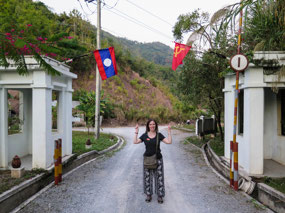
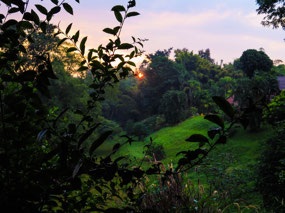
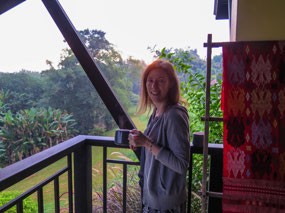
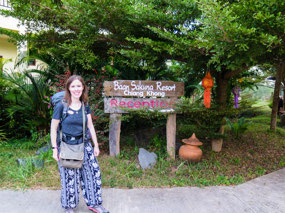
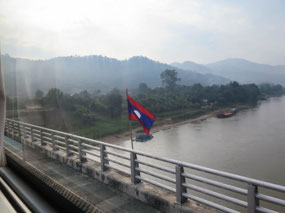
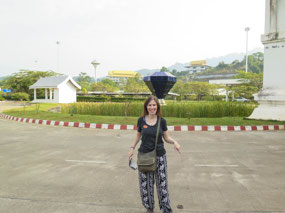
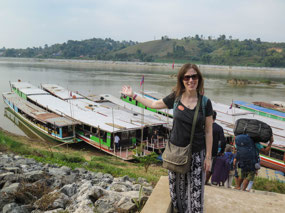
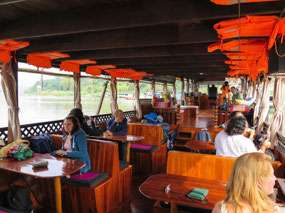
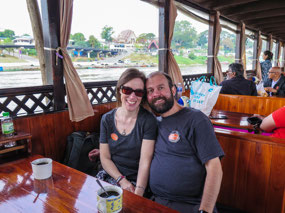
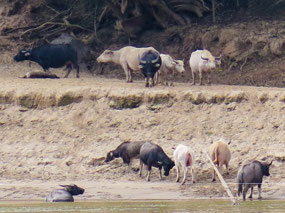
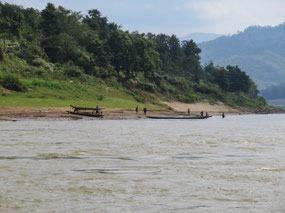
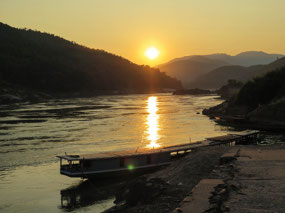
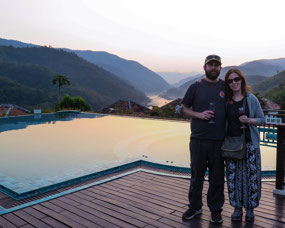
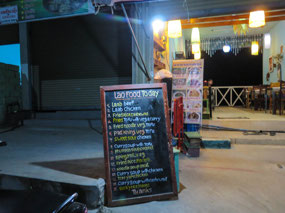
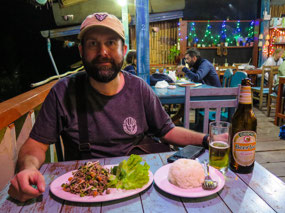





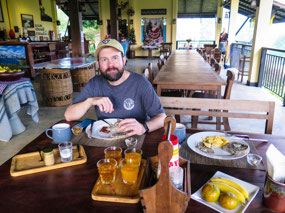

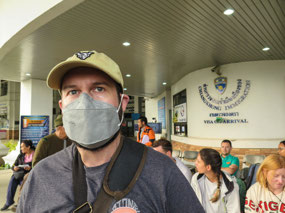
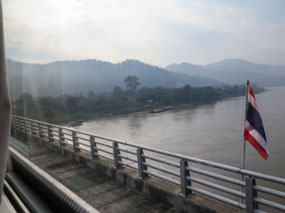
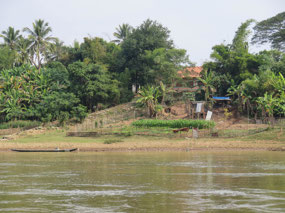
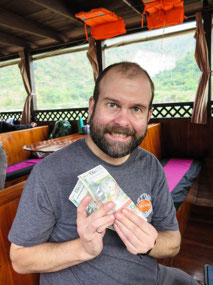
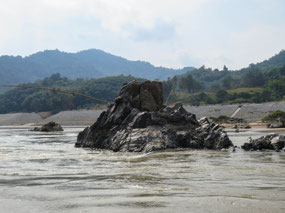
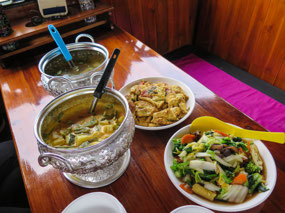
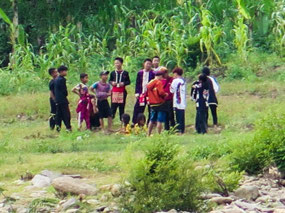
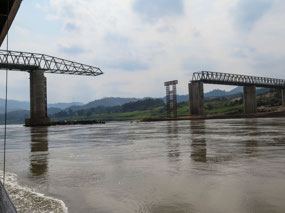
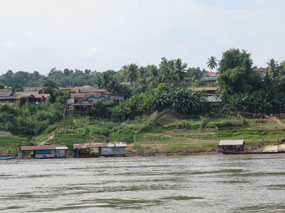

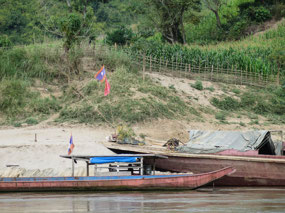
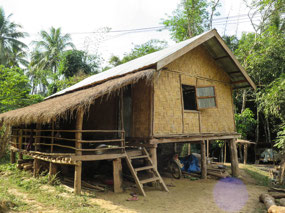
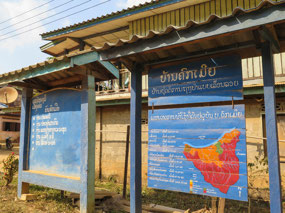
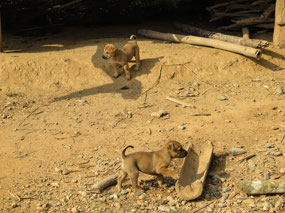
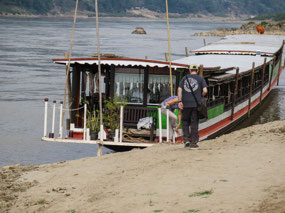
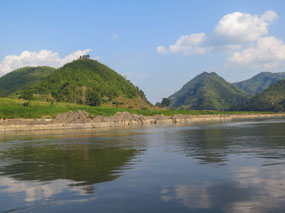

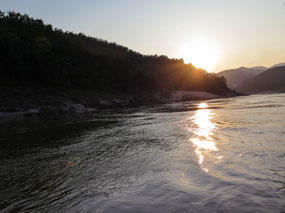
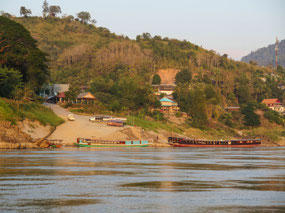
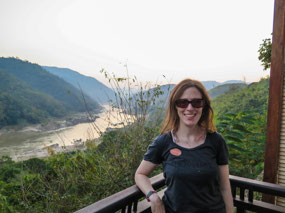
Joanne
2022-12-25
Sounds like an adventure, and yes, no more motorcycles!